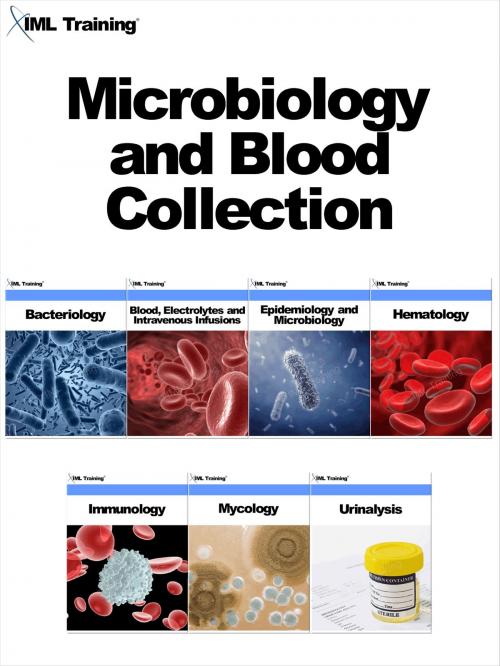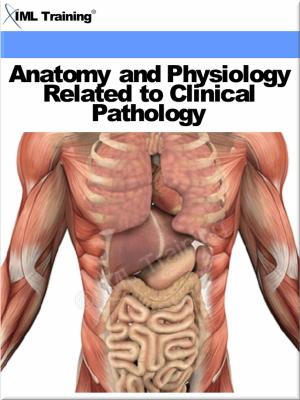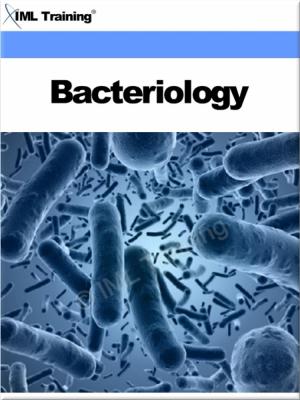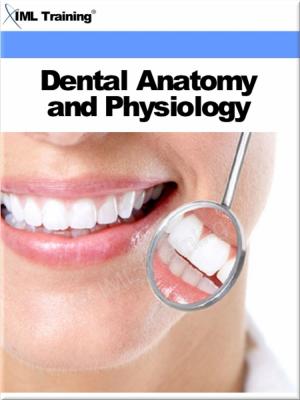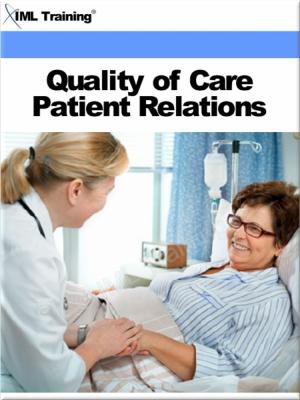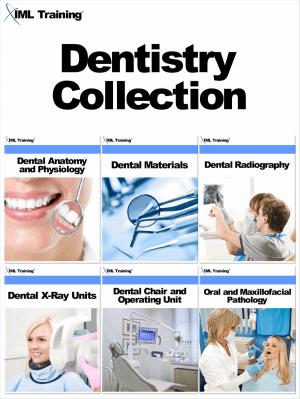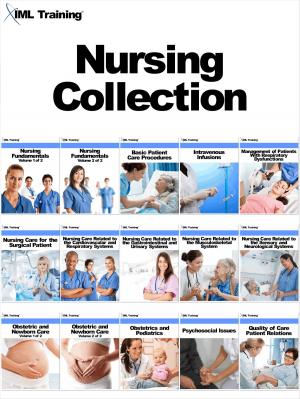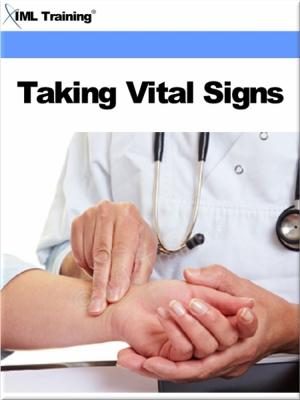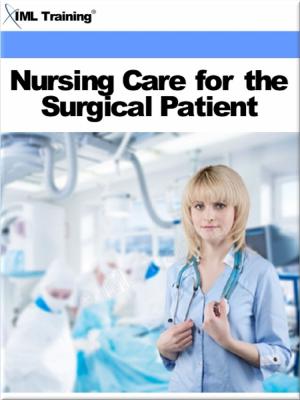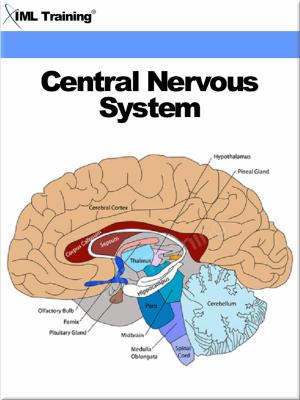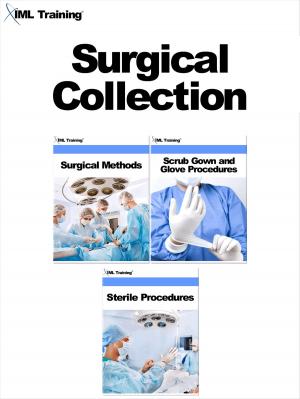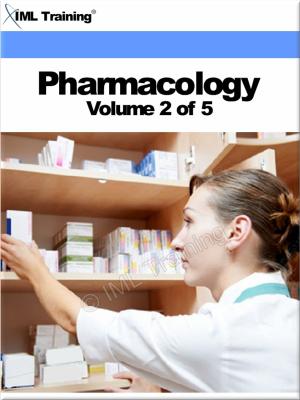Microbiology and Blood Collection
Includes Bacteriology, Blood Electrolytes and Intravenous Infusions, Epidemiology and Microbiology, Hematology, Immunology, Mycology, and Urinalysis
Nonfiction, Health & Well Being, Medical, Medical Science, Microbiology| Author: | ISBN: | 9781782582588 | |
| Publisher: | IML Training | Publication: | August 23, 2013 |
| Imprint: | IML Training | Language: | English |
| Author: | |
| ISBN: | 9781782582588 |
| Publisher: | IML Training |
| Publication: | August 23, 2013 |
| Imprint: | IML Training |
| Language: | English |
Microbiology and Blood Collection
This collection includes 7 of our training courses all within one book. You can easily use the bookmarks to navigate between each training course. This collection includes:
- Bacteriology
- Blood Electrolytes and Intravenous Infusions
- Epidemiology and Microbiology
- Hematology
- Immunology
- Mycology
- Urinalysis
Full illustrations and diagrams included.
Bacteriology
Bacteriology is the study of bacteria and involves the identification, classification, and characterization of bacterial species. The purpose of clinical laboratory procedures is to provide diagnostic work with specific information needed about the disorders observed in the patient. Clinical bacteriology can contribute by supplying data about the microscopic life involved and the susceptibility of such life to particular drugs.
Blood, Electrolytes and Intravenous Infusions
This course is concerned with knowledge that is vital in order to understand the "why's" and "how's" for using the intravenous route to administer the kinds of fluids that can save life and limb. There is also sections on intravenous infusions and a blood transfusions included.
Epidemiology and Microbiology
This course introduces the basic principles of disease transmission and epidemiology principles which are in use today.
Hematology
This course is concerned with the blood tests performed in the hematology section of the laboratory. The purpose of these tests is to aid the physician in diagnosis. Thus, these tests are important and often essential to the health and life of the patient. Thorough study of this course should enable you to better fulfill your role in health care.
Immunology
Immunology is a branch of biomedical science that covers the study of all aspects of the immune system in all organisms. It deals with the physiological functioning of the immune system in states of both health, diseases and malfunctions of the immune system in immunological disorders. Immunity is one way the body has of giving itself both prevention and sometimes a cure. The body develops an immune response to prevent the growth of foreign invaders that might cause disease. Incidentally, there are also times when the immune response becomes a problem in itself, as with allergies, and the rejection of transplanted organs.
Mycology
This course discusses important topics such as procedures for the collection and processing of mycologic specimens, media and equipment, taxonomy and characteristics of important fungi, and techniques for the culture and identification of fungal pathogens.
Urinalysis
Due in part to the development of multiple reagent strips (dipstix) for urinalysis, more laboratory tests are now performed each year on urine than on any other body fluid. A typical urinalysis includes tests for glucose, protein, pH, ketone bodies, bilirubin, occult (unseen) blood, urobilinogen, and specific gravity and microscopic examination of urinary sediment. Many common abnormalities can be recognized by urine studies. Urine tests are the method of choice to monitor the treatment of diabetes. This course will focus on the analysis of urine. The contents of the text will present and discuss the topics outlined above.
This collection includes 7 of our training courses all within one book. You can easily use the bookmarks to navigate between each training course. This collection includes:
- Bacteriology
- Blood Electrolytes and Intravenous Infusions
- Epidemiology and Microbiology
- Hematology
- Immunology
- Mycology
- Urinalysis
Full illustrations and diagrams included.
Bacteriology
Bacteriology is the study of bacteria and involves the identification, classification, and characterization of bacterial species. The purpose of clinical laboratory procedures is to provide diagnostic work with specific information needed about the disorders observed in the patient. Clinical bacteriology can contribute by supplying data about the microscopic life involved and the susceptibility of such life to particular drugs.
Blood, Electrolytes and Intravenous Infusions
This course is concerned with knowledge that is vital in order to understand the "why's" and "how's" for using the intravenous route to administer the kinds of fluids that can save life and limb. There is also sections on intravenous infusions and a blood transfusions included.
Epidemiology and Microbiology
This course introduces the basic principles of disease transmission and epidemiology principles which are in use today.
Hematology
This course is concerned with the blood tests performed in the hematology section of the laboratory. The purpose of these tests is to aid the physician in diagnosis. Thus, these tests are important and often essential to the health and life of the patient. Thorough study of this course should enable you to better fulfill your role in health care.
Immunology
Immunology is a branch of biomedical science that covers the study of all aspects of the immune system in all organisms. It deals with the physiological functioning of the immune system in states of both health, diseases and malfunctions of the immune system in immunological disorders. Immunity is one way the body has of giving itself both prevention and sometimes a cure. The body develops an immune response to prevent the growth of foreign invaders that might cause disease. Incidentally, there are also times when the immune response becomes a problem in itself, as with allergies, and the rejection of transplanted organs.
Mycology
This course discusses important topics such as procedures for the collection and processing of mycologic specimens, media and equipment, taxonomy and characteristics of important fungi, and techniques for the culture and identification of fungal pathogens.
Urinalysis
Due in part to the development of multiple reagent strips (dipstix) for urinalysis, more laboratory tests are now performed each year on urine than on any other body fluid. A typical urinalysis includes tests for glucose, protein, pH, ketone bodies, bilirubin, occult (unseen) blood, urobilinogen, and specific gravity and microscopic examination of urinary sediment. Many common abnormalities can be recognized by urine studies. Urine tests are the method of choice to monitor the treatment of diabetes. This course will focus on the analysis of urine. The contents of the text will present and discuss the topics outlined above.
Microbiology and Blood Collection
This collection includes 7 of our training courses all within one book. You can easily use the bookmarks to navigate between each training course. This collection includes:
- Bacteriology
- Blood Electrolytes and Intravenous Infusions
- Epidemiology and Microbiology
- Hematology
- Immunology
- Mycology
- Urinalysis
Full illustrations and diagrams included.
Bacteriology
Bacteriology is the study of bacteria and involves the identification, classification, and characterization of bacterial species. The purpose of clinical laboratory procedures is to provide diagnostic work with specific information needed about the disorders observed in the patient. Clinical bacteriology can contribute by supplying data about the microscopic life involved and the susceptibility of such life to particular drugs.
Blood, Electrolytes and Intravenous Infusions
This course is concerned with knowledge that is vital in order to understand the "why's" and "how's" for using the intravenous route to administer the kinds of fluids that can save life and limb. There is also sections on intravenous infusions and a blood transfusions included.
Epidemiology and Microbiology
This course introduces the basic principles of disease transmission and epidemiology principles which are in use today.
Hematology
This course is concerned with the blood tests performed in the hematology section of the laboratory. The purpose of these tests is to aid the physician in diagnosis. Thus, these tests are important and often essential to the health and life of the patient. Thorough study of this course should enable you to better fulfill your role in health care.
Immunology
Immunology is a branch of biomedical science that covers the study of all aspects of the immune system in all organisms. It deals with the physiological functioning of the immune system in states of both health, diseases and malfunctions of the immune system in immunological disorders. Immunity is one way the body has of giving itself both prevention and sometimes a cure. The body develops an immune response to prevent the growth of foreign invaders that might cause disease. Incidentally, there are also times when the immune response becomes a problem in itself, as with allergies, and the rejection of transplanted organs.
Mycology
This course discusses important topics such as procedures for the collection and processing of mycologic specimens, media and equipment, taxonomy and characteristics of important fungi, and techniques for the culture and identification of fungal pathogens.
Urinalysis
Due in part to the development of multiple reagent strips (dipstix) for urinalysis, more laboratory tests are now performed each year on urine than on any other body fluid. A typical urinalysis includes tests for glucose, protein, pH, ketone bodies, bilirubin, occult (unseen) blood, urobilinogen, and specific gravity and microscopic examination of urinary sediment. Many common abnormalities can be recognized by urine studies. Urine tests are the method of choice to monitor the treatment of diabetes. This course will focus on the analysis of urine. The contents of the text will present and discuss the topics outlined above.
This collection includes 7 of our training courses all within one book. You can easily use the bookmarks to navigate between each training course. This collection includes:
- Bacteriology
- Blood Electrolytes and Intravenous Infusions
- Epidemiology and Microbiology
- Hematology
- Immunology
- Mycology
- Urinalysis
Full illustrations and diagrams included.
Bacteriology
Bacteriology is the study of bacteria and involves the identification, classification, and characterization of bacterial species. The purpose of clinical laboratory procedures is to provide diagnostic work with specific information needed about the disorders observed in the patient. Clinical bacteriology can contribute by supplying data about the microscopic life involved and the susceptibility of such life to particular drugs.
Blood, Electrolytes and Intravenous Infusions
This course is concerned with knowledge that is vital in order to understand the "why's" and "how's" for using the intravenous route to administer the kinds of fluids that can save life and limb. There is also sections on intravenous infusions and a blood transfusions included.
Epidemiology and Microbiology
This course introduces the basic principles of disease transmission and epidemiology principles which are in use today.
Hematology
This course is concerned with the blood tests performed in the hematology section of the laboratory. The purpose of these tests is to aid the physician in diagnosis. Thus, these tests are important and often essential to the health and life of the patient. Thorough study of this course should enable you to better fulfill your role in health care.
Immunology
Immunology is a branch of biomedical science that covers the study of all aspects of the immune system in all organisms. It deals with the physiological functioning of the immune system in states of both health, diseases and malfunctions of the immune system in immunological disorders. Immunity is one way the body has of giving itself both prevention and sometimes a cure. The body develops an immune response to prevent the growth of foreign invaders that might cause disease. Incidentally, there are also times when the immune response becomes a problem in itself, as with allergies, and the rejection of transplanted organs.
Mycology
This course discusses important topics such as procedures for the collection and processing of mycologic specimens, media and equipment, taxonomy and characteristics of important fungi, and techniques for the culture and identification of fungal pathogens.
Urinalysis
Due in part to the development of multiple reagent strips (dipstix) for urinalysis, more laboratory tests are now performed each year on urine than on any other body fluid. A typical urinalysis includes tests for glucose, protein, pH, ketone bodies, bilirubin, occult (unseen) blood, urobilinogen, and specific gravity and microscopic examination of urinary sediment. Many common abnormalities can be recognized by urine studies. Urine tests are the method of choice to monitor the treatment of diabetes. This course will focus on the analysis of urine. The contents of the text will present and discuss the topics outlined above.
